Bordering on the Divisive: Two or More Neighbourhoods in Athens
I encountered the turd on Arachovis Street, about one and a half blocks north-west of Asklipiou. I didn’t actually step into it: my peripheral vision had registered it moments previously, and I’d probably subconsciously classified it as geological feature best given wide berth. It really was an extraordinarily large turd: polymerous in structure, in fact, making it more of a turd-complex, or a compound-turd. A nobbled trunk of tremendous girth, poking upwards, adjacent to a slick of peaty, viscous gloop, which looked as though it had been troweled onto the pavement with great force.
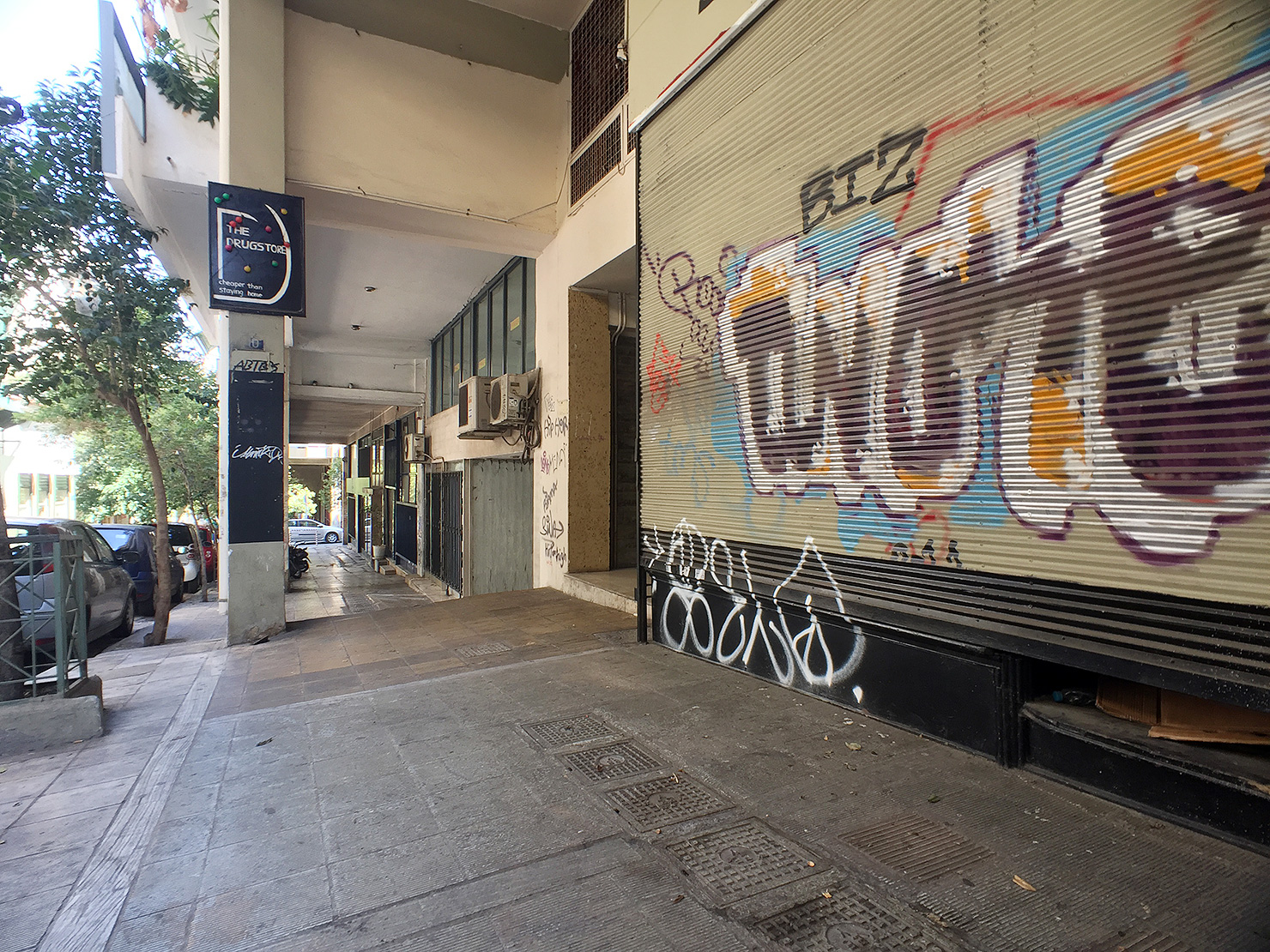 Close encounters of the turd kind
Close encounters of the turd kind
For two more blocks I speculated about the turd’s origin. Sure, there was something vaguely anthropogenic about it, but the squalid chain of events leading up to its being excreted onto the middle of a pavement in Athens’ Exarcheia district was too unseemly to be plausible. On the other hand, I couldn’t image any other mammal capable of producing such a monument to its pitiable existence either, let alone one indigenous to this city’s streets. Surely no domestic dog could have produced that monstrosity. A large hyena, perhaps, or, hell – who knows? – a small rhinoceros.
Some days earlier, the owner of the deli on Kallidromiou explains how his great-grandfather had been quizzed about his decision to build a house in Exarcheia, probably around 1900. “There’s nothing but wolves up there”, a member of the family had warned him, projecting rural fears onto the endeavours of pioneering urbanites. Wolves: fine. May the turd be lupine.
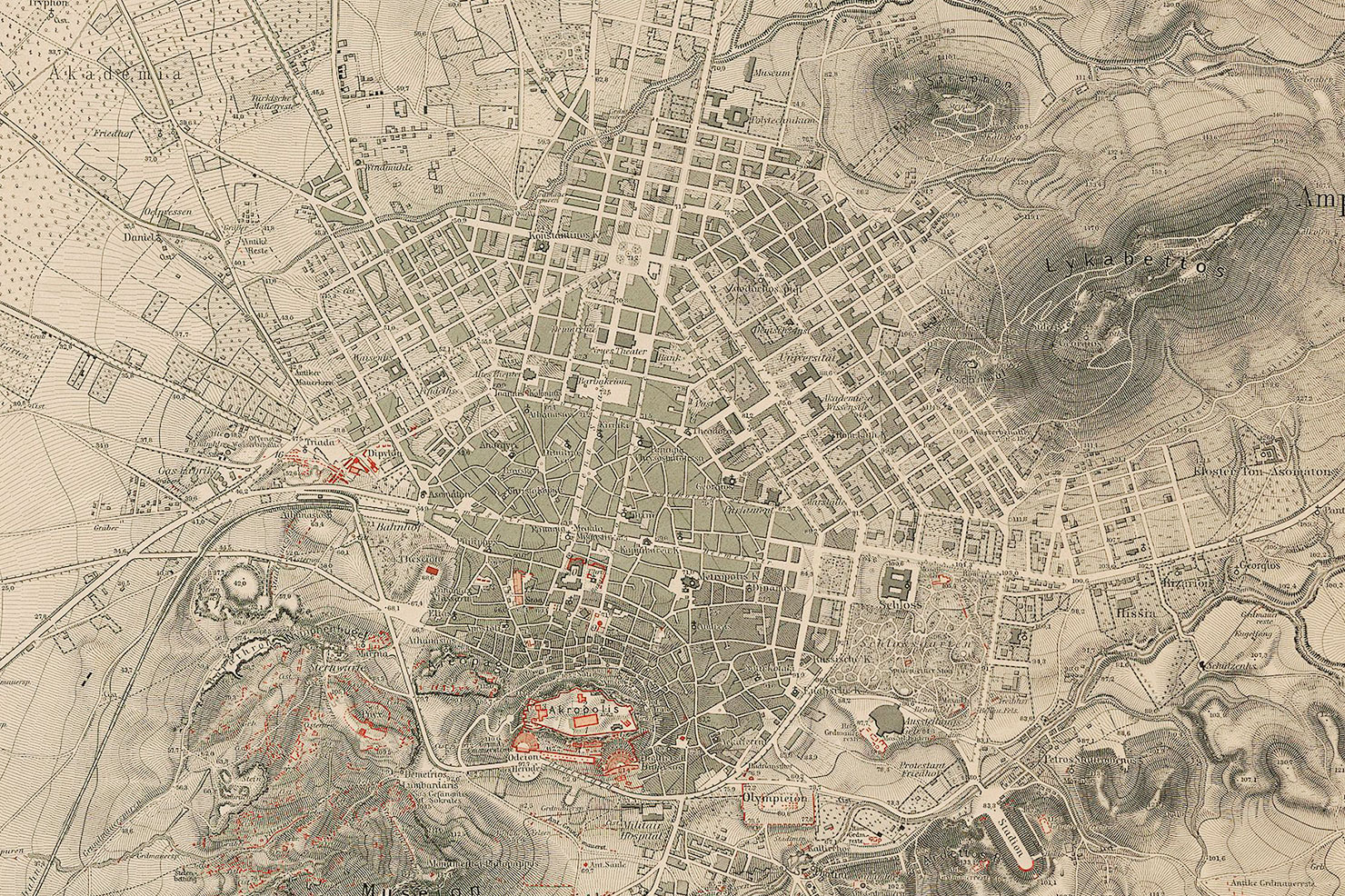 Athen mit Umgebung, Johann August Kaupert, 1875 (detail)
Athen mit Umgebung, Johann August Kaupert, 1875 (detail)
In 1895, Exarcheia was a growing suburb, creeping up towards the twin peaks of Lykavittos and Strefi. The area was named after an early resident from Epirus, a greengrocer by the name of Exarchon, whose store united urban demands with rural produce and helped spawn a neighbourhood. Long since home to writers, intellectuals and artists, Exarcheia today is renowned as the base for countercultural movements on the far left of the political spectrum. When 15-year-old Alexandros Grigoropoulos was shot dead by police in 2008, the ensuing riots were so fierce that Athens ran out of teargas. Now though, some feel that their neighbourhood has been encroached upon by pseudo-anarchists who see Exarcheia is a lawless playground where destructive urges can be lived out with impunity.
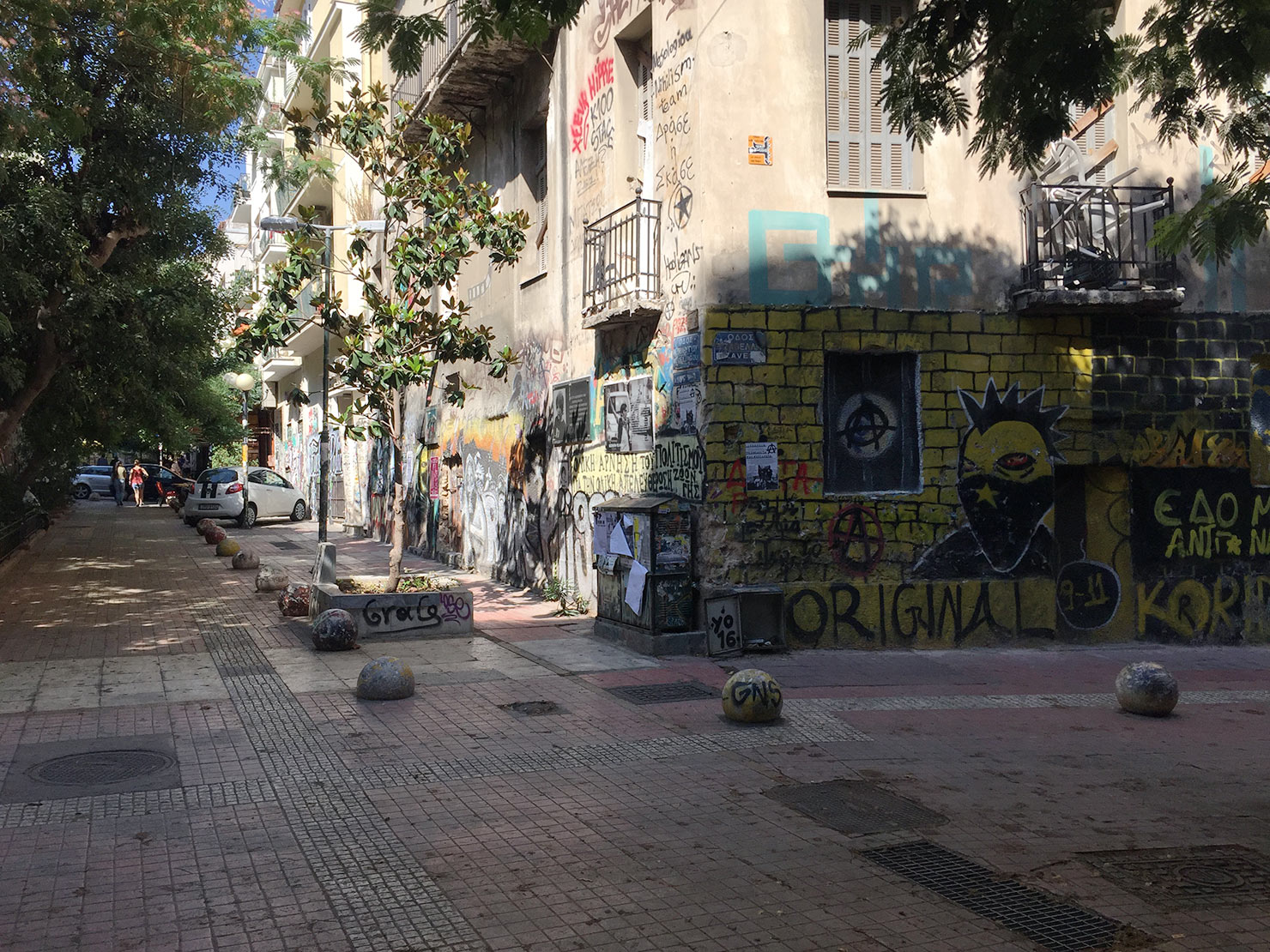 Exarcheia, Athens. Looking west, down Mesologgiou, with the memorial to Alexandros Grigoropoulos seen center.
Exarcheia, Athens. Looking west, down Mesologgiou, with the memorial to Alexandros Grigoropoulos seen center.
I move through the neighbourhood, dealing with the assault of impressions by guiltily training my camera on everything, my hope being that some kind of deeper understanding might spontaneously emerge through the stockpiling of imagery: a very modern misconception. Appropriately, only words are able to recount the sensation of street intersections smelling of printer’s ink. The entire supply chain of ideas seems manifest in Exarcheia: from university (fabrication), to printing press (re-production), to book shop (dissemination). I slurp freddo-espresso from plastic cups, and the town seems to gurgle back at me: complex forces lurk. The crises of our time are will-o’-the-wisp, haunting the city’s interstitial terrain: sun-parched parking lots, humid planters, shuttered storefronts, laundry lines strung from windows of makeshift refugee shelters. Elsewhere, new matter – begging geomorphic study – is strewn in the wake of the crisis: the cracked asphalt in front of the Athens School of Fine Arts is lined with the glittering shards of pulverised crystal-meth pipes, like narcotic kintsugi.
Cracks in the asphalt are lined with glittering shards of crushed crystal-meth pipes, like narcotic kintsugi
I was here visiting my wife, who is currently working for documenta14, the German contemporary art exhibition traditionally held in Kassel every five years. Next year, in April 2017, half of the documenta program is scheduled to launch in Athens, the first time the exhibition has left its home town. Artistic director Adam Szymczyk hopes to deliver “a real-time response to the changing situation of Europe”, and envisages the exhibition as a generator of situations rather than a parader of artefacts. I’m quoting the editors’ letter, co-penned by Szymczyk, published in the magazine South as a State of Mind in late 2015 (to which, incidentally, my wife and myself also contributed, as translators to the architect and philosopher Aristide Antonas). From our current vantage point (mid-refugee-crisis; pre-Brexit-fallout; post-bailout-fatigue; post-Shengen-restoration-scheme; post-Pokemon-Go-minefield, post-Trump-fascist-endorsements), Szymczyk’s choice of words appear both delicately evasive and bluntly clairvoyant.
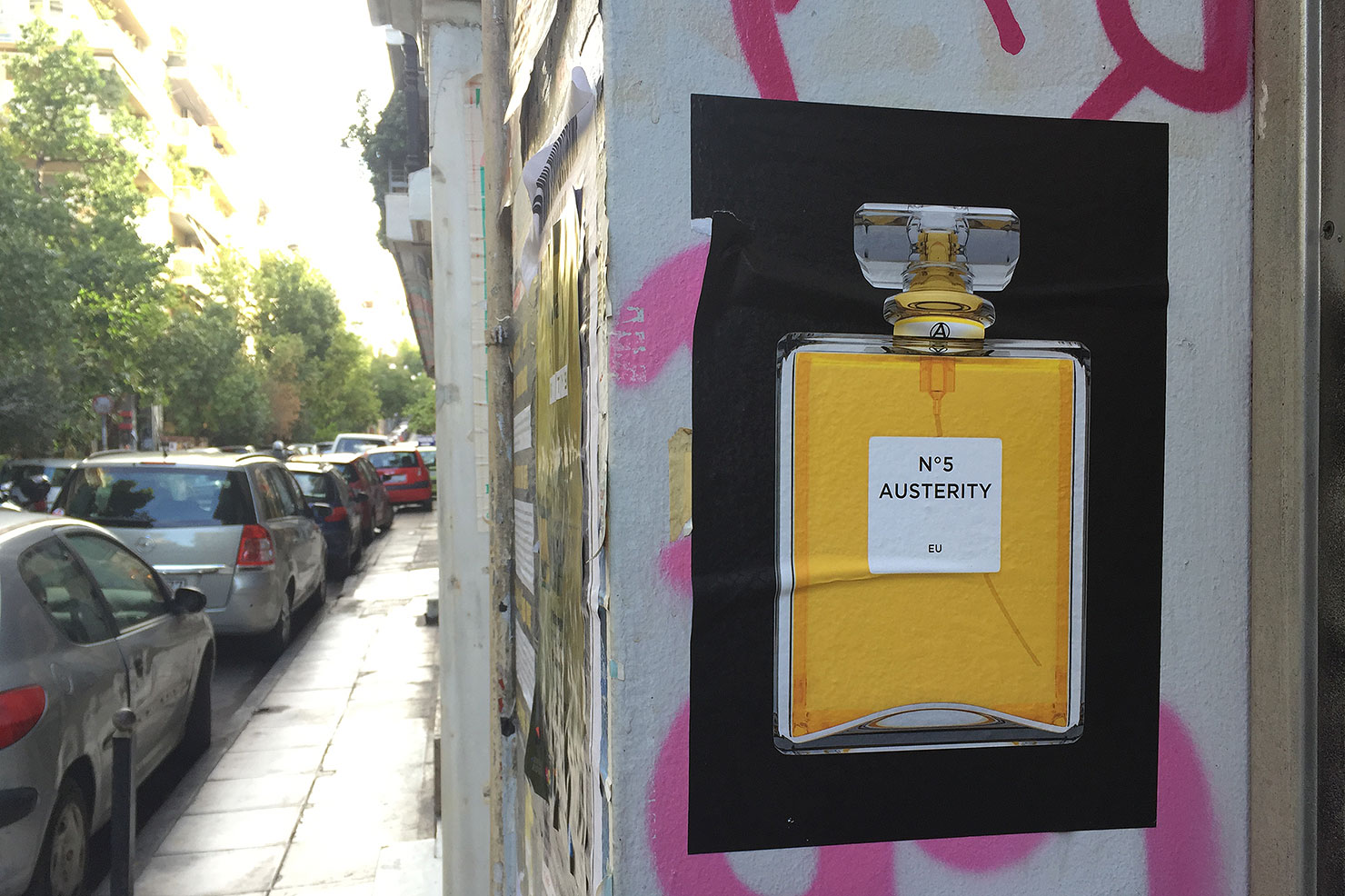 Poster campaign by Vincenzo Fagnani and Tana Santos of Mouselephant
Poster campaign by Vincenzo Fagnani and Tana Santos of Mouselephant
I work from various cafés, and the office of friends, and we briefly inhabit an apartment listed on Airbnb, until we suspect it is infested with fleas. There’s nothing like having your blood drained by ectoparasites to remind you of the earthy physicality of dwelling, just as your notion of residency is being disrupted by Silicon Valley’s fever-dream of wi-fi-nomadism. At some point, the roll-call of wireless routers stored on my phone and laptop outnumbers the flea bites on my ankles, and we seek alternative shelter. From the balcony of Hotel Dryades, high above Exarcheia, I survey the roofscape west of Kallidromiou Street and re-imagine the neighbourhood as a crackling archipelago of electromagnetic hotspots. At street level, down in the concrete gorges, their locations and properties might be extrapolated from the decorative paving intarsia – Wi-Fi petroglyphs – which are gruffly calibrated against temporal disturbances by clandestine municipal service workers who leave marks on signs with lengths of electrical insulation tape.
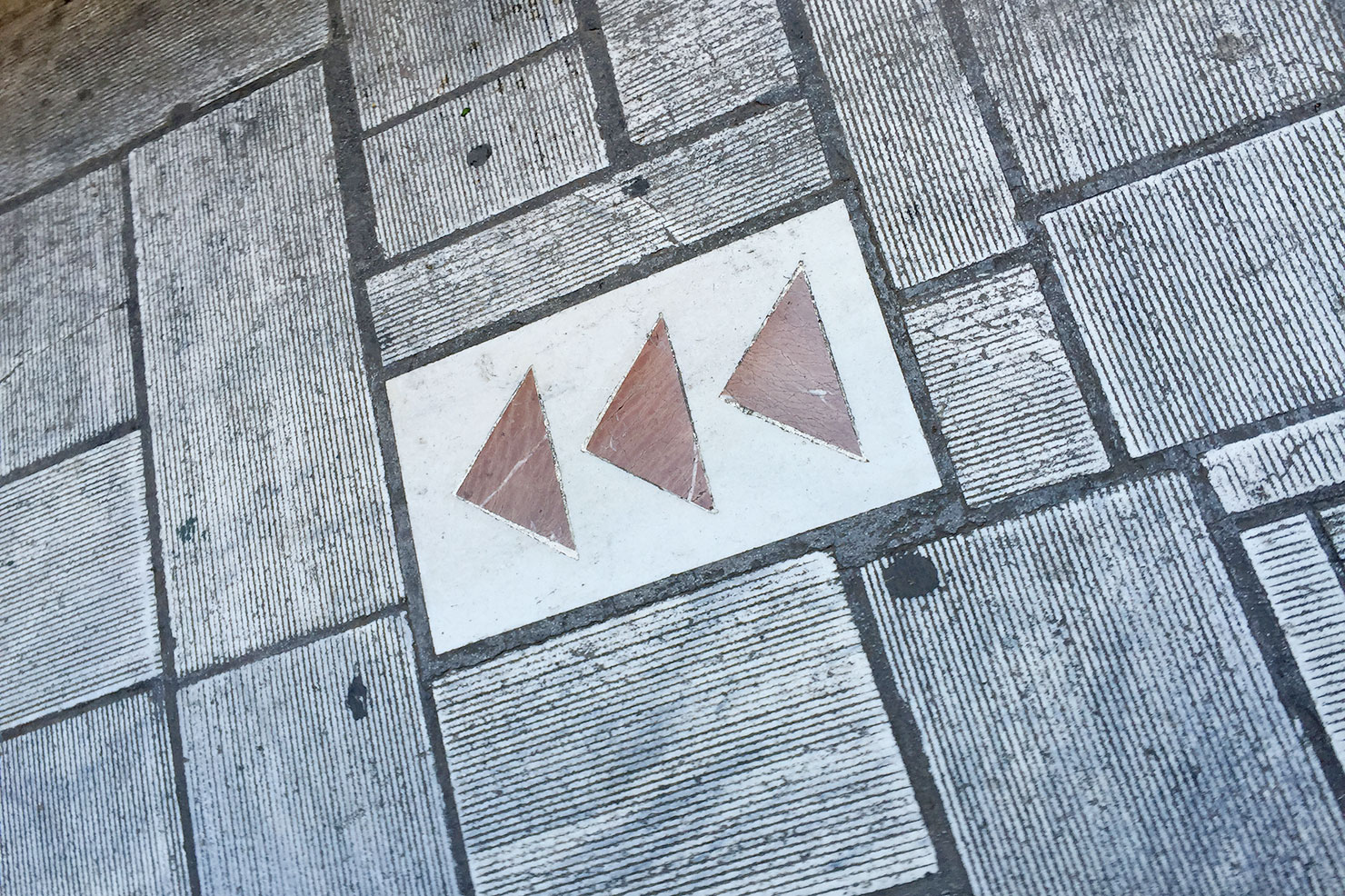
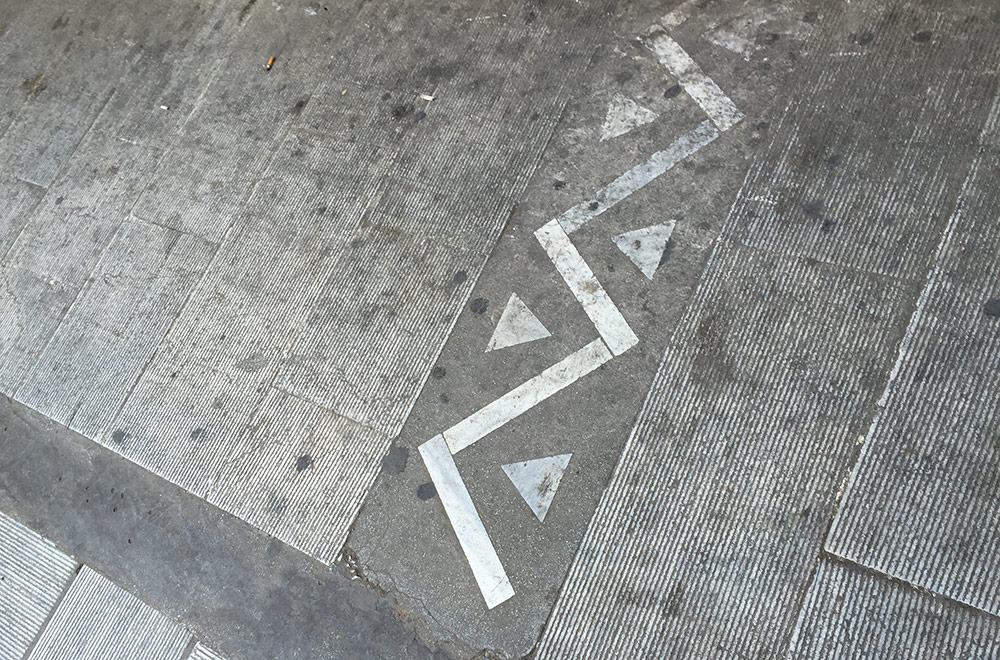
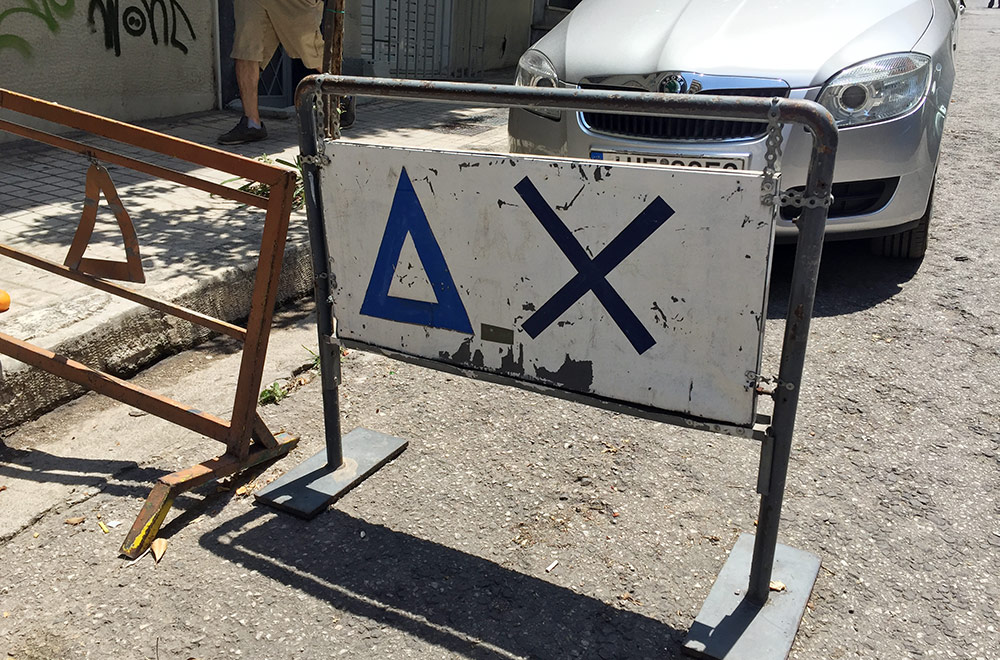
If I am to understand the act of walking as a dialogue with the environment, then I can report that the conversation between my feet and the floor was convivial, though peppered with false-starts, misunderstandings, diplomatic gaffes and non sequiturs. I become fascinated by the quality of pavements, though partly out of necessity: I feared tripping or slipping, and soon assumed the gait of an ostrich on a trampoline.
Navigating Athens presupposes swimming or clambering as a suitable form of motion
Some paving stones are mirror-smooth marble, whilst others buckle or crumble to a powder, or are strewn with fermenting bitter oranges. Under the shady stoa common to 1960s and ’70s-era buildings, pavements in Athens are generously wide, but elsewhere might be as narrow as an ironing board. I occasionally find myself contorted, mid-stride, avoiding a dumpster parked in the gutter, and a low-hanging tree growing defiantly out of an adjacent cellar. I feel like I’ve been re-drawn by Ronald Searle. My entire body is suddenly involved with the task of locomotion, as if Athens presupposes swimming or clambering as a suitable form of motion. Conversely, a fluid style of walking, utterly frictionless, could be proposed as a denial of this idiosyncratic topography.
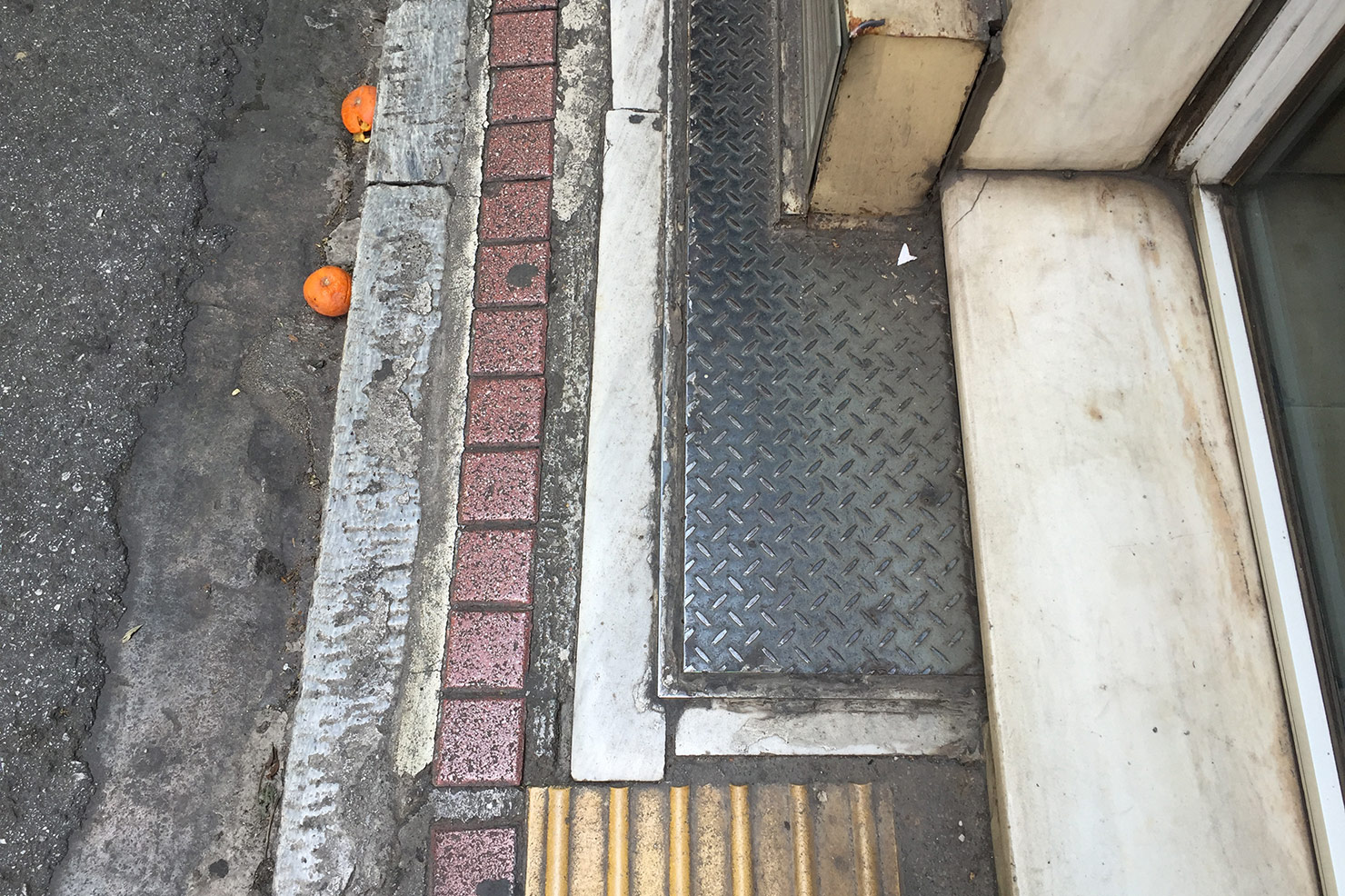
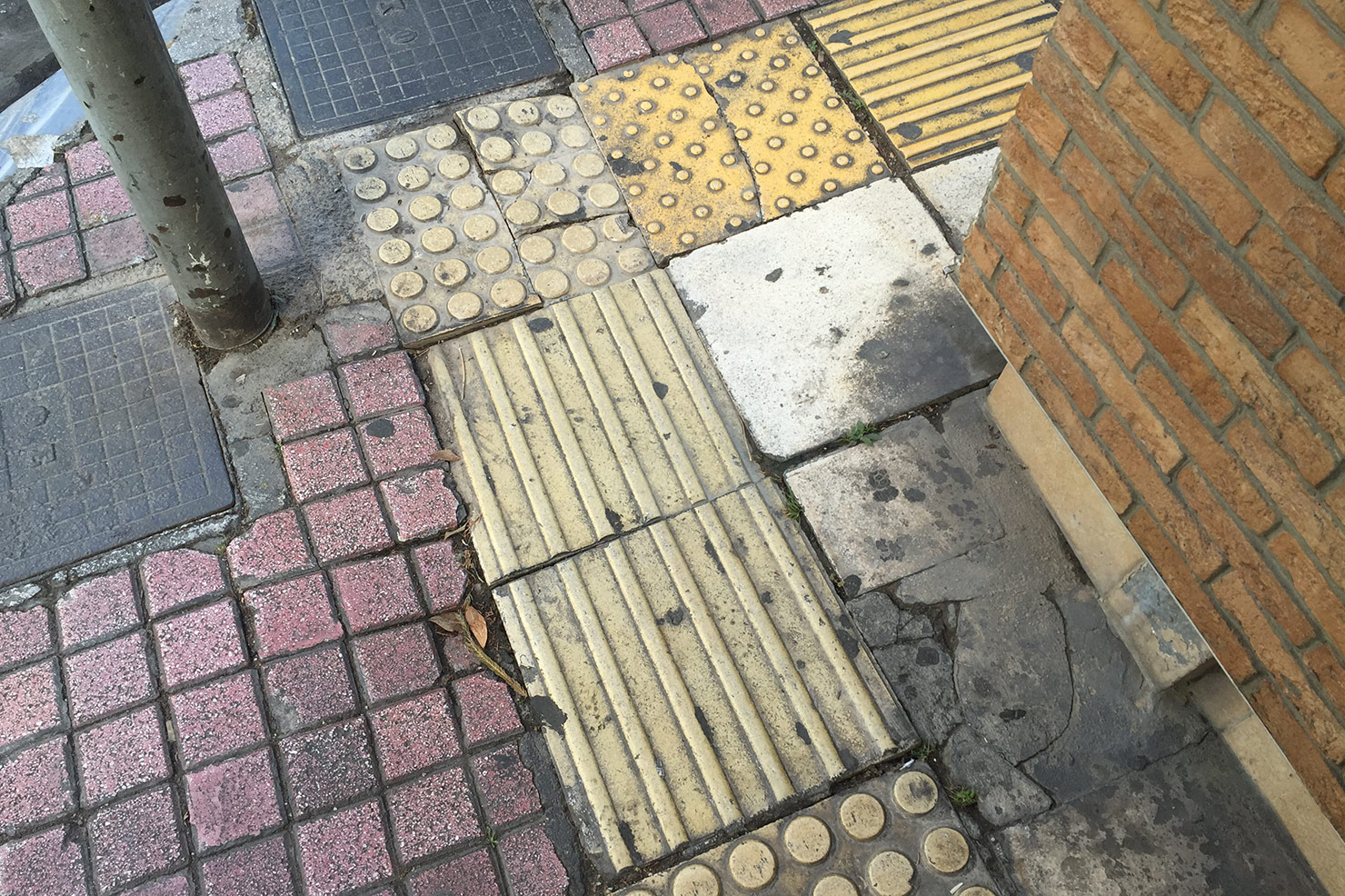
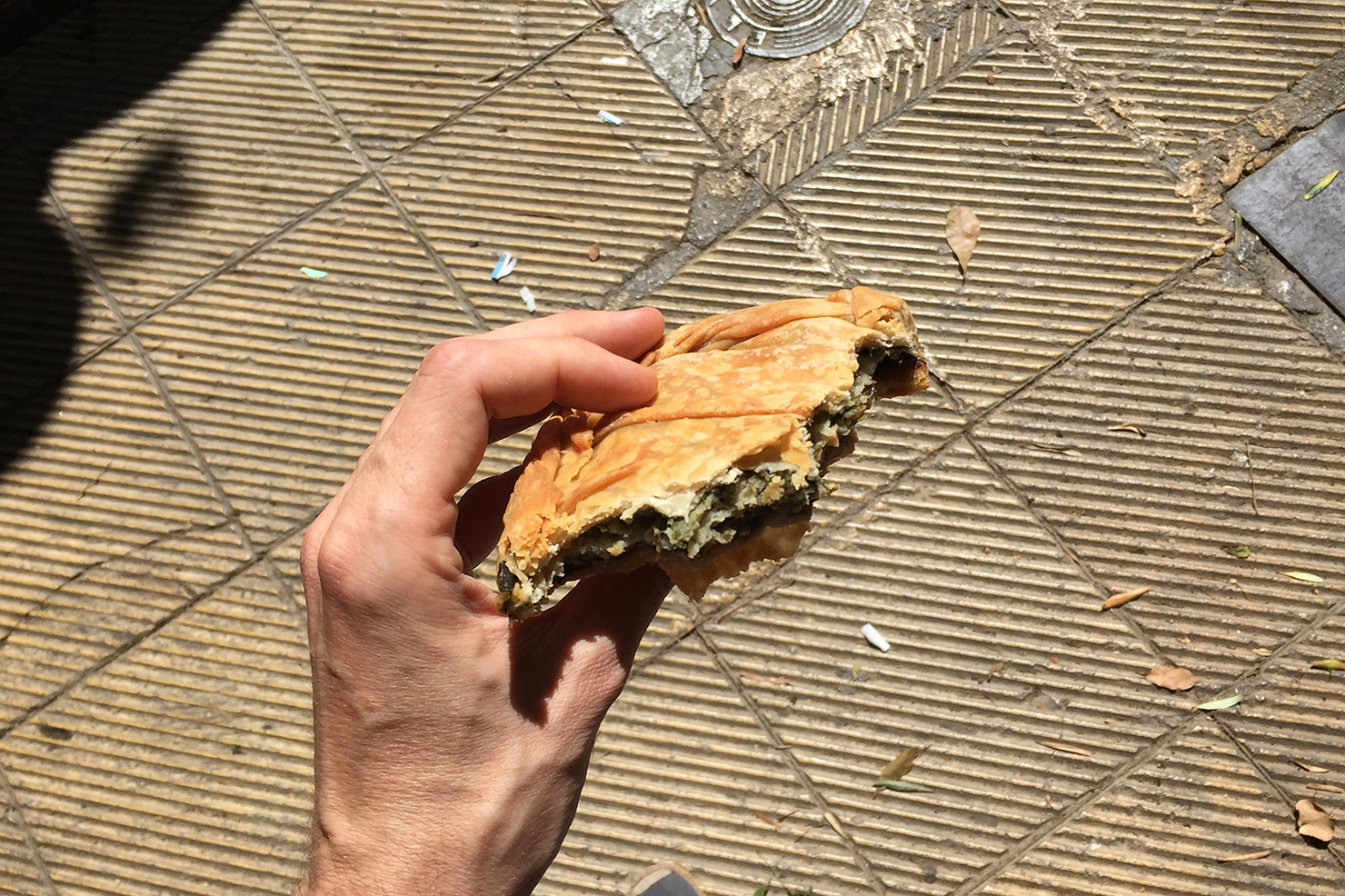
Late one morning, on foot and eating a spanakopita, I imagine the Athens pavements as a vast tract of filo pastry, or as the underside of a gigantic biscuit. A rolled sheet, cut down and embossed, baked crisp, made brittle, porous, eventually pulverised … walking becomes an act of attrition, of slow violence done to geology. The historian Karl Schlögel reminds us of the conviction held by Konstantin Paustowsky, chronicler of the Russian Revolution, that the course of world history could be read from the surface of pavements [1]. Paustowsky might not have had a palimpsest of baking traditions in mind, and we shouldn’t take lightly Schlögel’s invitation to discern the nature of our time within space, and to hastily see Athens’ diversely textured paving slabs purely as an account of collapse and ruin.
A civic-punk bricolage-aesthetic emerges
The linear grooves and offset-blisters of tactile paving for the blind have been installed within a patchwork of other textures with enthusiastic diligence, but capitulate to local topographical conditions and lack of legislative feedback. From this partial adoption of norms, a civic-punk bricolage-aesthetic of subversive appropriation emerges, and it is tempting to see reflected in it the whole of Greece in relation to the idea of Europe. The partial adoption of a scheme, interpreted as an origins narrative, re-imposed but refracted: the space between two broken mirrors, laid down face to face.
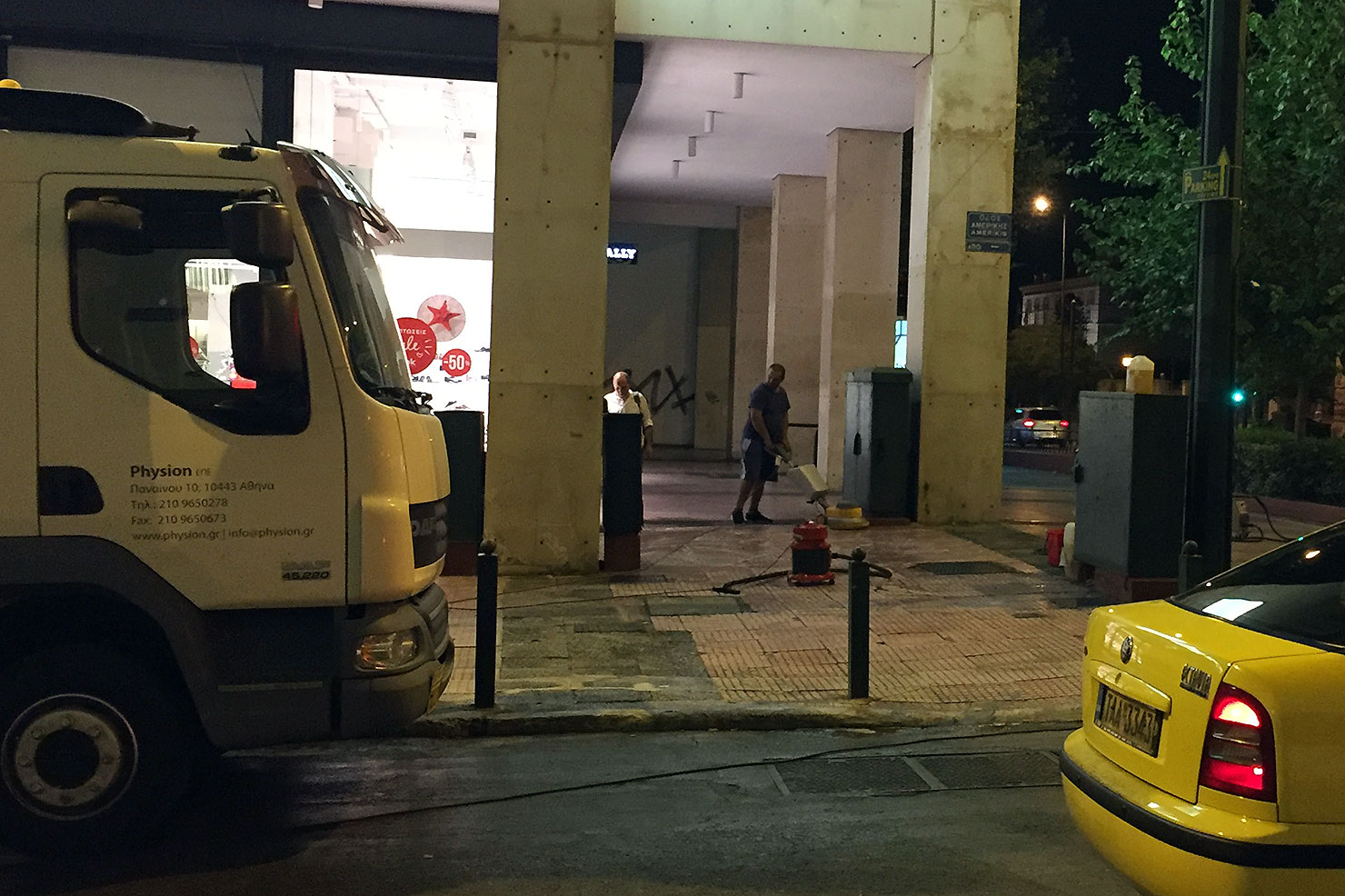 Pavement buffing between shoe store and street: the maintenance of desire-mechanisms
Pavement buffing between shoe store and street: the maintenance of desire-mechanisms
The various aggregate conditions on which pedestrians trace their daily routines are as inconsistent as anything you’d find further below. The twin geological forces of faulting and erosion define the basin onto which the city was built. An extreme illustration of this is presented by the limestone rock of the Acropolis. Around 30 million years older than the layers beneath, it floats on top of the surrounding “Athens schist” like an unmoored ship, having been pushed into position by tectonic forces. [2] Within the schist, an eight-thousand year archaeosphere of human activity can be found at depths anywhere between 20 cm and 20 m. During construction work on the Athens metro system, tunnel boring machines (TBMs) would chew their way through alternating layers of shale and hard rock, occasionally penetrating the remains of ancient wells. For millennia, it was common practice to fill dried-up wells with household waste, so digging work was often halted by deluges of antiquities cascading into the fresh tunnels.
A tension or contradiction posed by the invention of modern Athens in the middle of the 19th century is described by Aristide Antonas [3]. Mirroring the region’s geological past, he identifies two anthropogenic forces seemingly tugging in opposite directions: the ongoing construction and renewal of the subterranean technical infrastructure, and the ceaseless task of unearthing the ruins of the past. The continual nature of this process is emphasised by Matt Edgeworth, of the University of Leicester, who argues that the boundary between natural geological deposits and the archeosphere is diachronous, that is, occurring at many different points in geological time, and subject to change [4]. There are at least six competing arguments for when the Anthropocene began (ranging from 13,800 years before present, to 1950), but all make the assumption that it can be marked by a single, globally applicable date. The Athens metro makes a case for a more nuanced proposal, but also embodies a penetrative desire to impose order upon the subterranean. A TBM performing its endoscopic surgery close to the port of Piraeus in 2015 was named Hippodamus, after the ancient Greek architect and urban planner Hippodamus of Miletus. He favoured orthogonal street arrangements, and proposed three classes of land and three classes of citizen.
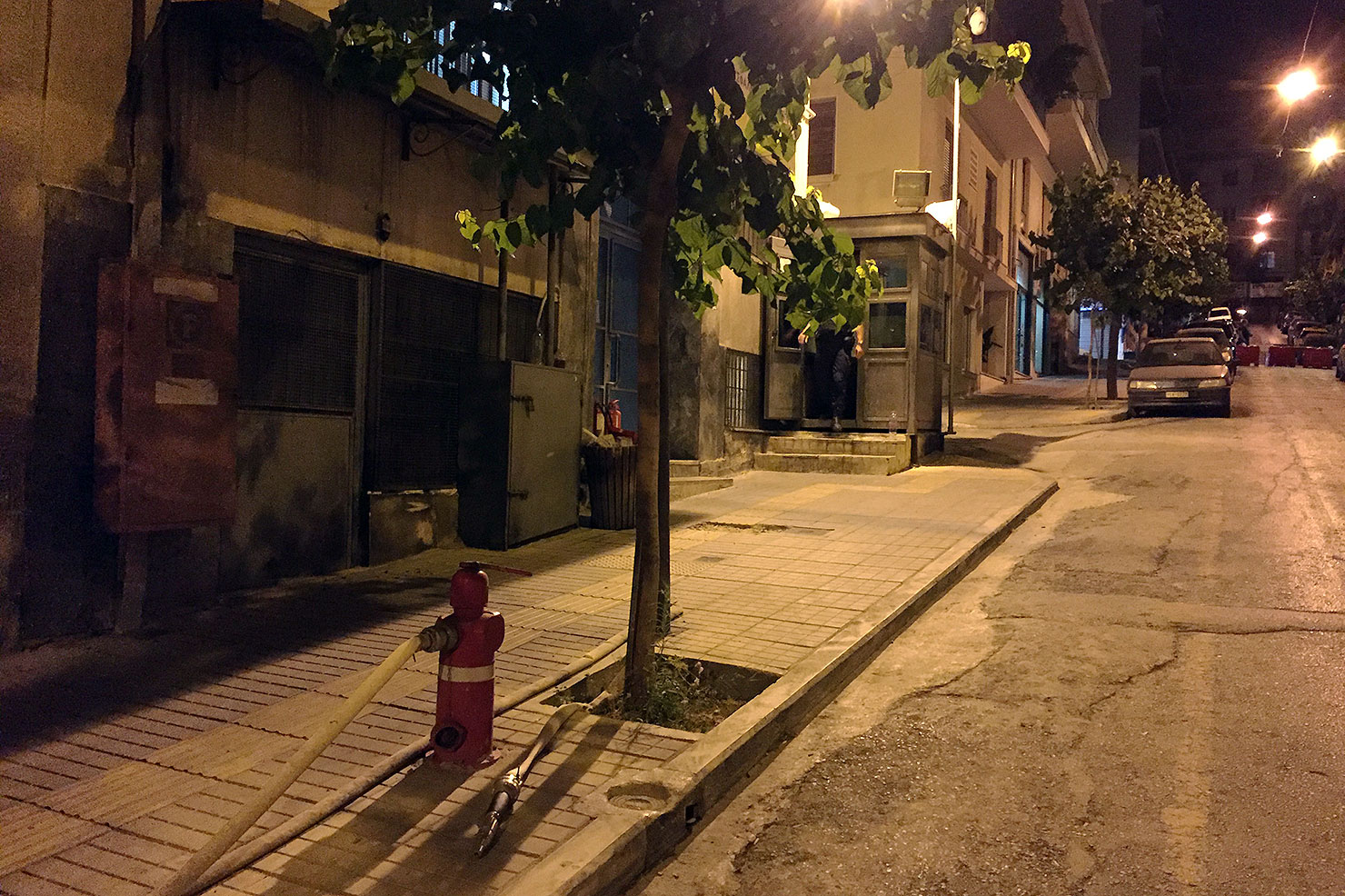 Hippodamian block-party
Hippodamian block-party
Hippodamus’ concerns for the administrative workings of the city, and his advocacy of an arms-bearing class, converge high on Kalidromiou, where a whole orthogonal block is controlled by the local police station in the manner of a dividing, conquering force. Whilst not actually marking the municipal boundary between Exarcheia and neighbouring Kolonaki, its imposing command over matter implies border fortification. Which in a way, it is. The police station operates as a surveillance node, and a detention centre for undocumented migrants as a part of the police operation known as Xenios Zeus. In an act of arch cynicism, the name perverts the epithet Xenios, given to Zeus as the patron of hospitality, avenger of wrongs done to strangers. Four blocks to the west, an old school building functions as a home for refugees.
A fire hydrant repurposed as a makeshift water canon
One night, whilst walking from Exarcheia to Kolonaki, I pass through the roadblock. A fire hydrant has been repurposed as a makeshift water canon, and I take a photo, captivated by the weaponisation of civil infrastructure. A police officer immediately approaches and firmly requests that the photo is deleted. Obviously, it’s only a favour, but I’m in no position to argue: I’m literally outgunned, and he doesn’t look particularly open to a protracted legal discussion about the validity of photography in public space, or a reminder that the scene has been clearly documented by Google since 2009. Some minutes later I retrieve the image from a folder on my phone named “Recently Deleted”. A day or two later I pass the police station in daylight, and spot the source of their unease: at face-height, eleven bullet holes scar the armoured glass of the guard post.
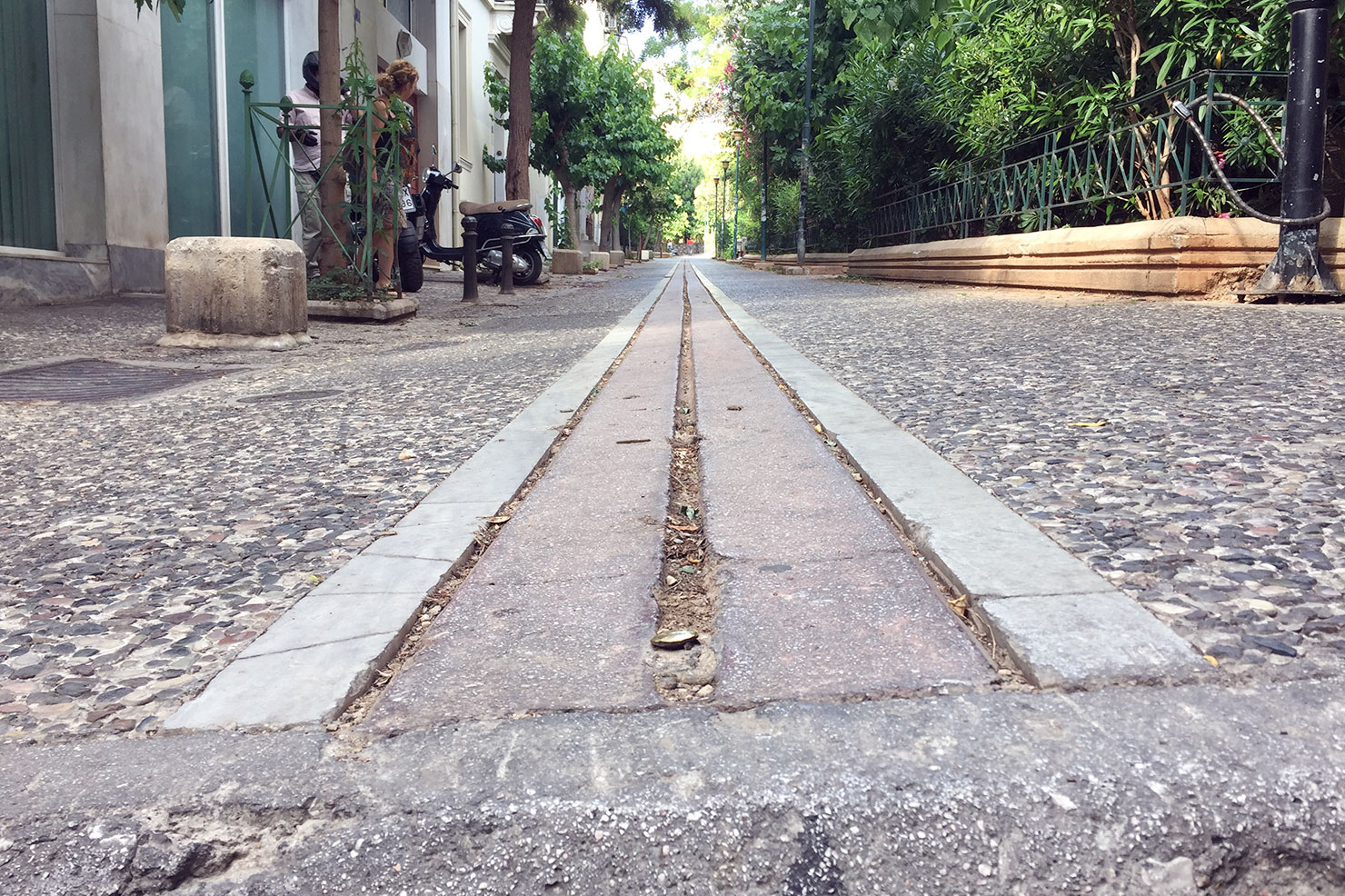 Bordering on the divisive: the alleyway Prassa, close to, but nothing to do with, the postal-code borders between Exarcheia and Kolonaki
Bordering on the divisive: the alleyway Prassa, close to, but nothing to do with, the postal-code borders between Exarcheia and Kolonaki
Where Exarcheia has community kitchens, improvised refugee shelters and permanently stationed riot police, Kolonaki has investment banks, Balenciaga boutiques and private security details. From the top of Lykavittos hill you can look down onto rooftop swimming pools, mostly full, some drained. The balconies of millionaire corn merchants and billionaire shipping magnates are obscured by dense, lush vegetation.
The buffer zone between the neighbourhoods is indistinct, perceived as a crimp (not quite a seam) in the socio-spatial fabric. Referring to a café here, where many of these words were laid down, an acquaintance says “Warehouse is where you go for a Kolonaki feeling, without leaving Exarcheia.” A week later I’m told that the zone’s residents use the official municipal title “Neapoli”, but its exact location is sufficiently arcane to warrant a meticulous investigation by online magazine Popaganda in early 2016. How odd, that I’d perceived the district as a vibration before I knew of its existence; how peculiar that it should be called Neapoli, “New City”, as though named for its recurring, serendipitous discovery.
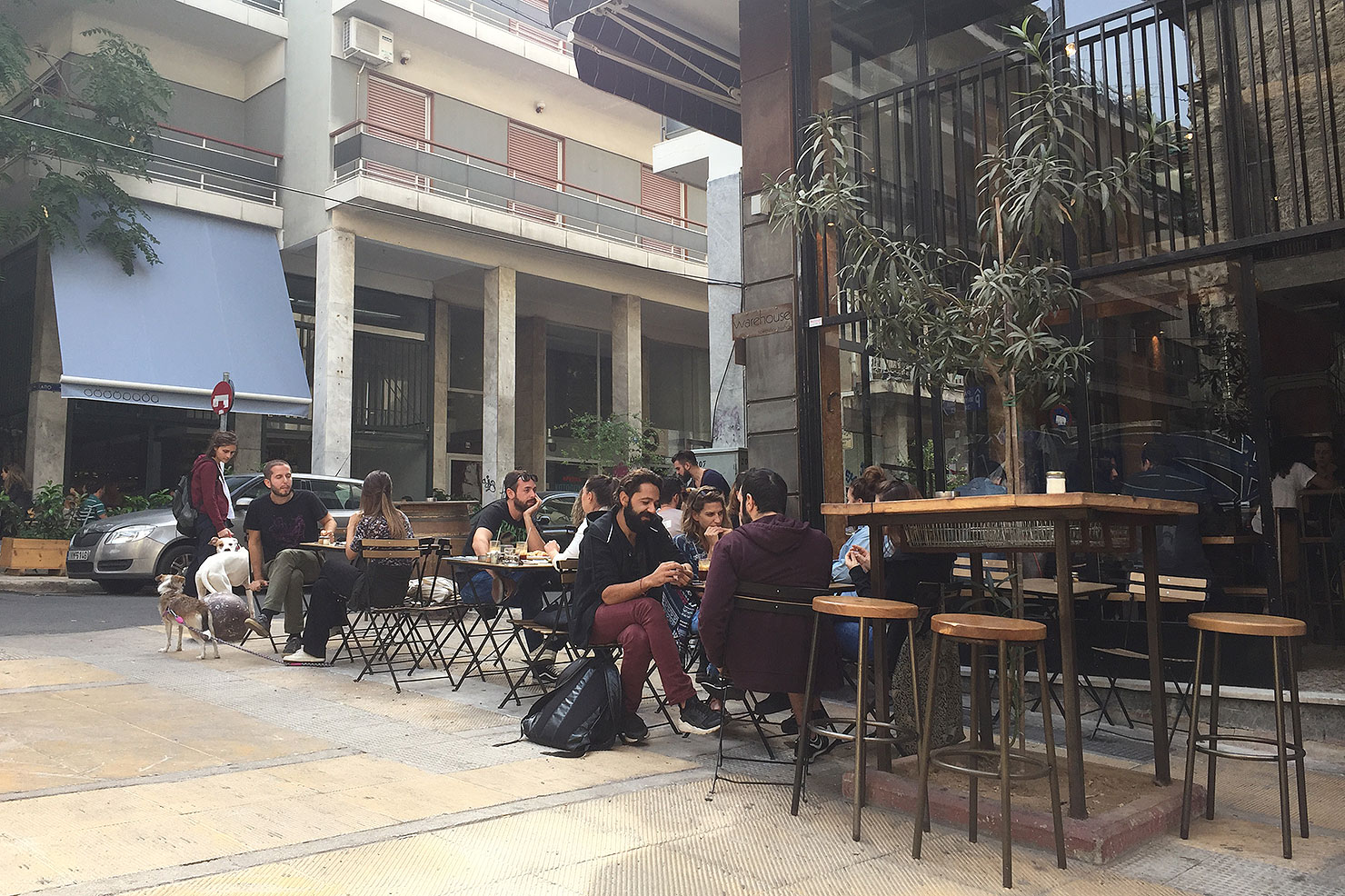 A crimp in the socio-spatial fabric: the café Warehouse.
A crimp in the socio-spatial fabric: the café Warehouse.
Utilising these borders as administrative creases along district postal codes, Exarcheia and Kolonaki could be folded back upon one another, so that – in a devious game of exquisite corpse – the Gucci loafers or Prada clutch bags of Kolonaki Square might be mapped to the torn jeans and Misfits t-shirts of Exarchon Square: an origami model of “simultaneous heterogeneity”, to pilfer a term from Doreen Massey [5].
Bending Athens along these lines would be like folding a millefeuille in half, but Kolonaki provides us with a means of fixing our warped psycho-topography: a pin, in the form of a small, ancient column, mounted on one side of Platia Kolonakiou. Kolonaki – literally “little column” – takes its name from this micro-monument, once a free-standing phenomenon in the middle of a field, recorded on an 1852 French map, existing, no doubt, in oral history, and before that, a pillar from some long forgotten structure. The column seems to be balanced on a plinth, a trinket with no function, but could conceivably penetrate the Athens schist to great depths, a skewer anticipating its posthistoric role, after seismic forces have kneaded the city into a vertical stack.
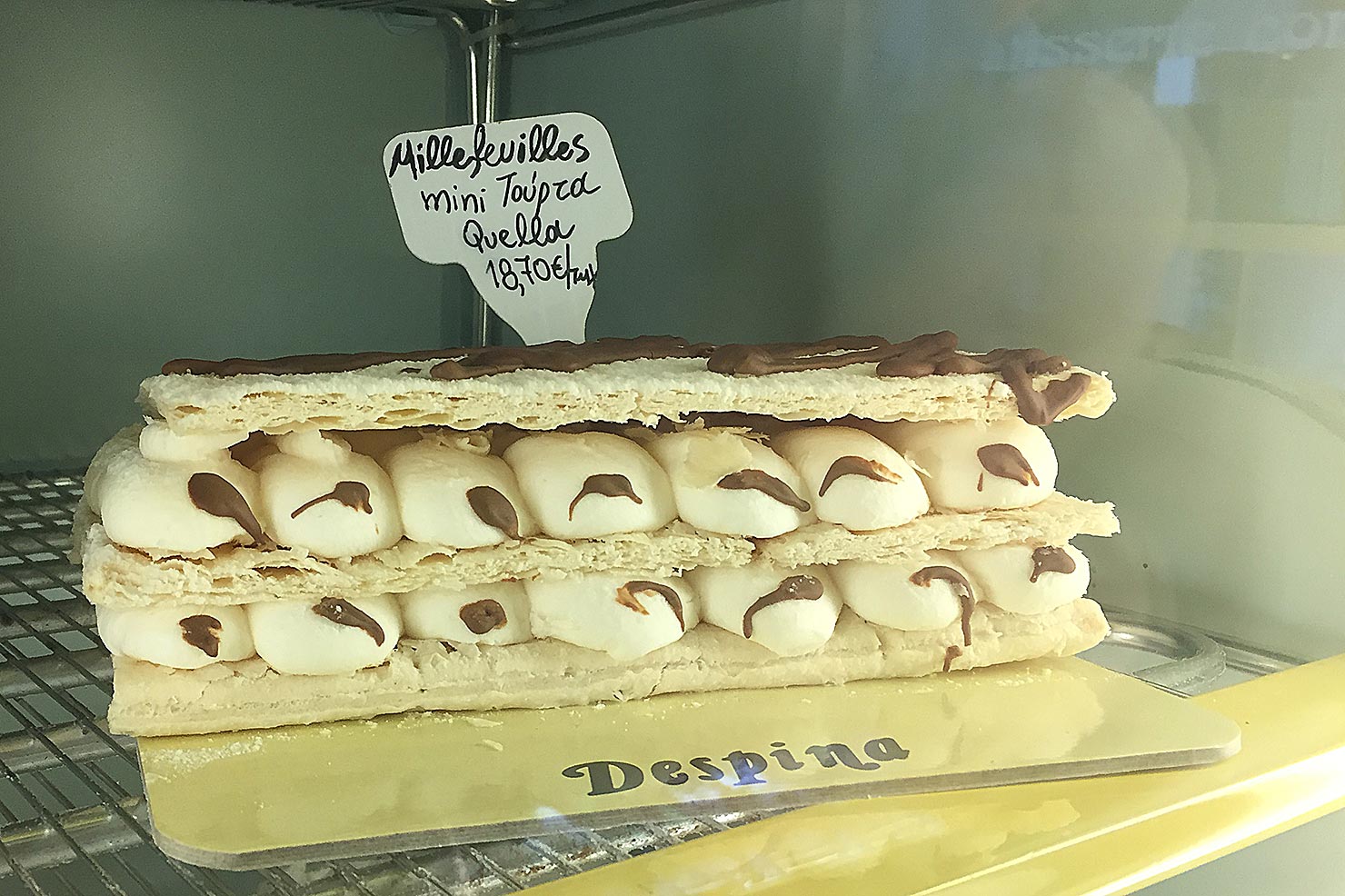
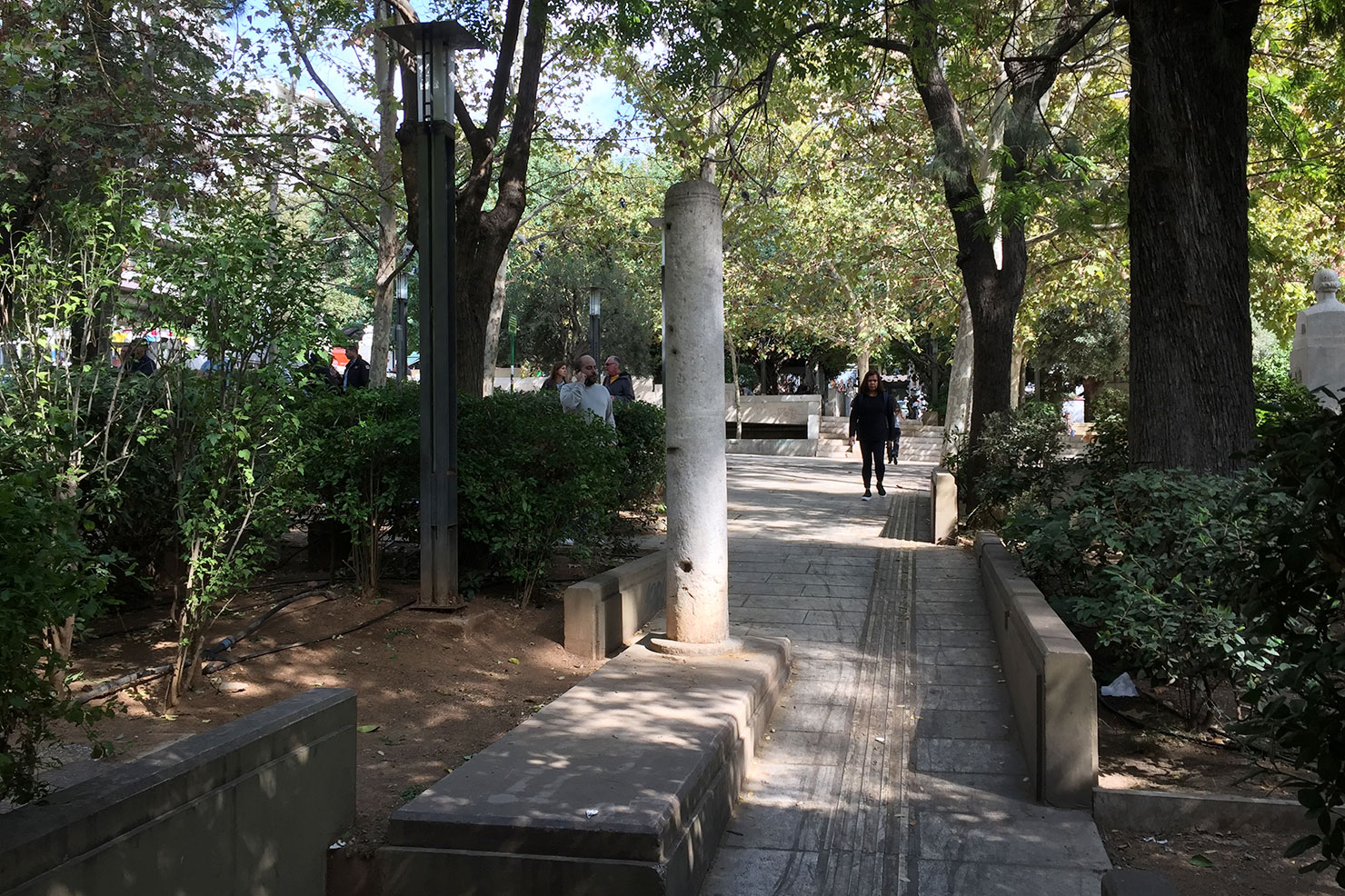 top: Millefeuille patageology; bottom: the eponymous kolonaki of Kolonaki
top: Millefeuille patageology; bottom: the eponymous kolonaki of Kolonaki
The turd on the border, that other little column I began with, was a message from the past, when wolves roamed the imagination on the hills outside old Athens. I fancy it was left by a feral Kolonaki pug, freed by a housekeeper in an act of mercy, but condemned now to haunt Neapoli as a spirit of the stoa, neither here nor there. This then, is a brown study on the between; on internalised peripheries; on what is excreted when distinguishing between two things; on the phenomena of shearing and bending; on the nausea of the street, the disposition of minerals, the border as rumour and diachronous conspiracy.
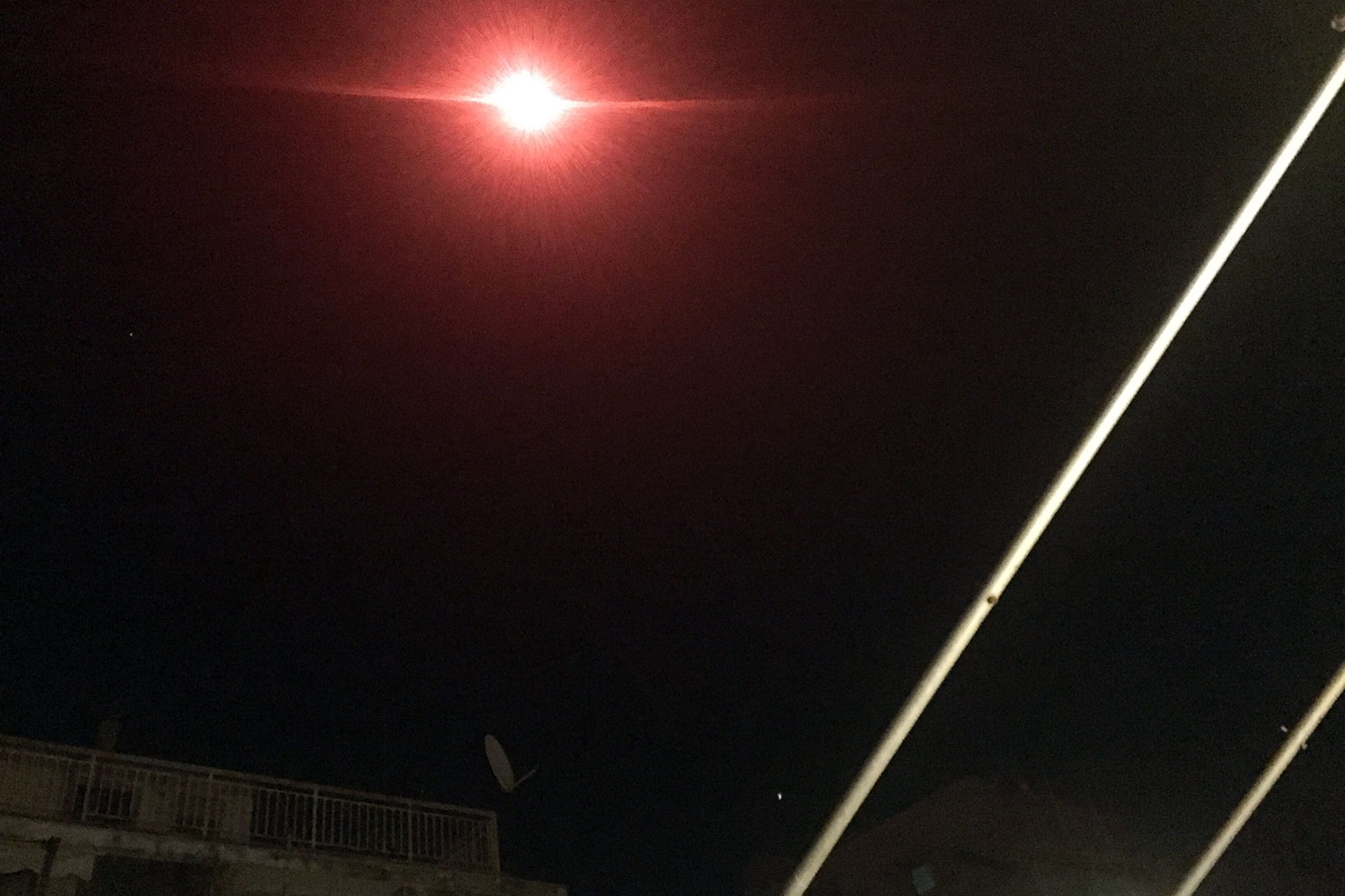
One evening in June, well after after sunset, we sat on the balcony of friends, and had souvlaki delivered to the fifth floor. We ate, drank and talked in the warm air. Much later, with no warning, two distress flares fizzed up into the blue-black sky, ignited, then descended on smokey trails, flooding Exarcheia with bright pink light. Time dilated, and for a moment I felt like we were riding on the deck of an ancient ship, navigating very new oceans.
References
[1] Karl Schlögel, Im Raume lesen wir die Zeit – Über Zivilisationsgeschichte und Geopolitik, (Frankfurt am Main: Fischer, 2006)
[2] Manuel Regueiro y González-Barros et al, “The Geology of the Acropolis, Athens, Greece”, in European Geologist, No. 38, November 2014, link
[3] Aristide Antonas, “The Construction of Southern Ruins”, in South as a State of Mind, issue 6, fall/winter 2015, link
[4] Matt Edgeworth et al, “Diachronous beginnings of the Anthropocene: The lower bounding surface of anthropogenic deposits”, in The Anthropocene Review, April 2015; vol. 2, 1: pp. 33-58., link
[5] Doreen Massey, For Space, (London: Sage Publications, 2005)
A portfolio of work by Mouselephant
can be downloaded here (PDF)
Thanks
for conversations had, walks walked, rumours uttered, office space shared and questions answered:
Aristide Antonas, Elina Axioti, Evi Chantzi, Xenia Kalpaktsoglou, Michelle Kondou, Evi Sougkara, Eleni Spiridaki, Yannikos Vassiloulis